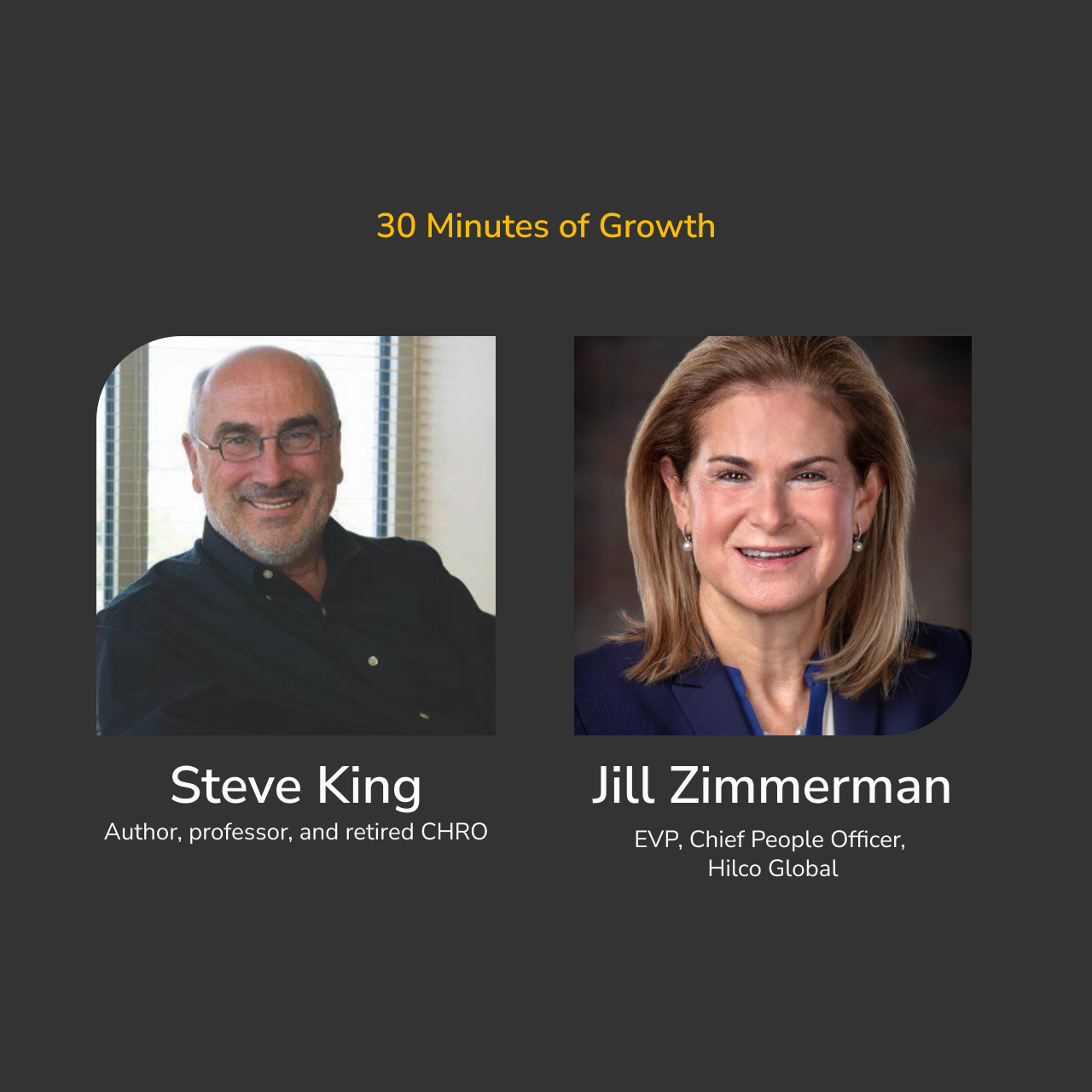What does it take to bring change to a large organization? On July 18th, Jill Zimmerman and Steve King, discussed this and much more in the latest “30 Minutes of Growth” webinar moderated by Erin Biehl. The session focused on effective change management strategies, addressing challenges like resistance and persistence. Here are 10 key takeaways from the webinar:
1. Articulating the Business Case for Change
Jill Zimmerman emphasized the importance of clearly communicating the business case for change. She stated, “People need to know what to do differently,” highlighting that understanding the why and where of change is crucial for successful implementation.
2. Comprehensive Change Management Framework
Jill presented a detailed framework that includes defining the future state, comparing it to the current state, and specifying roles and responsibilities. She stressed the necessity of addressing specific elements such as knowledge, skills, processes, culture, and technology tools.
3. Importance of Flexibility in Change Management
Steve King pointed out that “change is not a linear experience.” He emphasized the need for flexibility, as change often requires backtracking and adjusting. He suggested having a framework in mind but ensuring it is adaptable.
4. Role of Frontline Managers
Both panelists highlighted the critical role of frontline managers in driving change. Steve recommended that managers be equipped to “communicate, coach, and advocate” effectively. Jill added that involving frontline managers in the decision-making process and providing them with the necessary tools and support is essential for successful change implementation.
5. Addressing Organizational and Individual Barriers
Jill noted that it’s essential to identify and address both organizational barriers and individual resistance to change. She mentioned that understanding the specific reasons behind individual resistance is crucial. “If you don’t address individual resistance, the change will likely fail,” she said.
6. Fuel and Friction Approach
Steve introduced the concept of fuel and friction, where fuel represents the enablers of change (like training and peer pressure) and friction represents the barriers (like outdated processes). He suggested focusing on these aspects to drive new behaviors effectively.
7. Embedding New Behaviors in Processes
Steve discussed the importance of embedding new behaviors within existing processes to create a “virtuous cycle” where executing the process reinforces the behavior and vice versa.
8. Human-Centered Change
Jill and Steve both emphasized the human element in change management. Jill referred to her method as “stealth change management,” suggesting that understanding and addressing individual concerns and motivations is key to successful change.
9. Training and Support for Managers
The panelists agreed on the need for ongoing training and support for frontline managers to handle both the logical and emotional aspects of change resistance. Steve noted that managers need to develop emotional intelligence to address their teams’ feelings effectively.
10. Clear Communication and Roadmaps
In conclusion, Jill summarized the essentials of successful change management: a clear business case, buy-in at all levels, and a well-defined roadmap. She described the process as both a science and an art, requiring structured planning and a deep understanding of human behavior.
According to the panelists, by addressing these elements, HR and L&D professionals can lead successful change initiatives, ensuring that changes are effectively communicated, implemented, and sustained within their organizations.
For a deeper dive into the conversation, watch the full video here:




